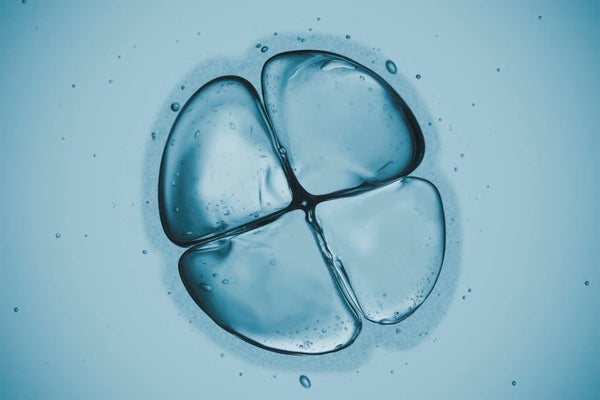Many Pregnancy Losses Are Caused by Errors in Cell Division
Odd cell divisions could help explain why even young, healthy couples might struggle to get pregnant
ugurhan/Getty Images
Human reproduction is notoriously inefficient. Whereas the fertilized eggs of other animals, such as mice, usually progress to more complex embryo stages, fertilized human eggs often falter early on. For a recent study in Genome Medicine, scientists analyzed almost 1,000 embryos from in vitro fertilization (IVF) procedures to learn why.
Scientists know that chromosomally abnormal human embryos—those with either more or fewer than 46 chromosomes—often don’t implant in the uterus, and if they do, the resulting pregnancy may end in a miscarriage or stillbirth.
Some of these abnormalities originate in the egg or sperm. In other cases, a healthy egg and sperm form an embryo that divides oddly; for example, instead of one cell dividing into two, it might become three. “There is a lot of evidence that during the first cell divisions, human embryos make a lot of mistakes,” says Claudia Spits, who studies related problems of reproduction and genetics at the Free University of Brussels.
On supporting science journalism
If you’re enjoying this article, consider supporting our award-winning journalism by subscribing. By purchasing a subscription you are helping to ensure the future of impactful stories about the discoveries and ideas shaping our world today.
The study authors found that these odd divisions lead to new chromosomal abnormalities, which can harm embryonic development even more than abnormalities that originate in the egg or sperm. The new errors can be “catastrophic,” says Johns Hopkins University evolutionary biologist Rajiv McCoy, the study’s lead author. “A lot of times you have three, four, five missing chromosomes.”
McCoy and his colleagues used time-lapse video and a microscope to record the IVF embryos’ first cell divisions. Then they tested…
Read the full article here







